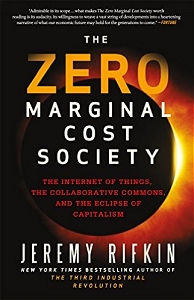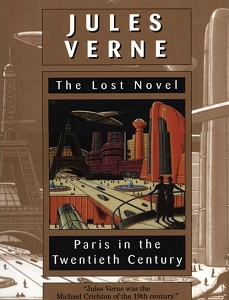When delivering a talk, it’s utterly important to grab your audience’s attention from the first moment on. In an earlier post on this blog, “Begin the beginning,” I gave a few examples on how you may surprise, intrigue or provoke them with an opening statement or poll. And in another article, “Titles, ” I elaborated on using original presentation titles.
Here’s yet another great jump-start for the beginning of your speech: tell the people in the room about a book you read that’s relevant to the subject of your presentation. You may even consider bringing a hard copy with you: a tangible artifact that your audience can see, touch and browse through.
In my day job as a high-tech marketer and communicator, I’m involved in conversations with customers and opinion makers about how broadband internet, connected devices, and Internet of Things (IoT) applications are changing the way we live, work, and do business. So, after reading the summaries below, it should be no surprise that I picked these three – fiction, non-fiction, and science fiction – books for introducing some of my speaking topics.
“Blackout – tomorrow will be too late” by Austrian author Marc Elsberg, is a techno-thriller about a large-scale power outage in Europe, caused by a cyber attack. While the digitization of the energy sector, and the move towards distributed power generation, smart meters, and internet-connected appliances are creating a number of opportunities, new technologies can also open the door to cyber threats.

As no-one wants to experience the scenario that’s described in this book, I mentioned it at the start a lecture about smart energy grids and cyber security. Unfortunately, I’m not aware of an English translation of the book.
In “The Zero Marginal Cost Society,” American social-economic theorist and activist Jeremy Rifkin describes how new technologies, such as 3D printing, green energy, and the Internet of Things, are speeding us to an era of nearly free goods and services (and, according to the author, the eclipse of capitalism.)

Billions of sensors are being attached to natural resources, production lines, energy grids, logistics networks, recycling flows, and implanted in homes, offices, stores, vehicles, and even human beings, feeding Big Data into an IoT global neural network. Prosumers will be able connect to the network and use Big Data to accelerate efficiency, increase productivity, and lower the marginal cost of producing and sharing a wide range of products and services to near zero…
In another post on this blog, “Back to the future,” I wrote about why it may be a good thing for a sales or marketing person to make speculations about the long-term future. Some of the best forward-looking statements –of which a number really materialized– about technology and the evolution of society were written many years ago. Take for example George Orwell’s “1984,” or Isaac Asimov’s “I, Robot.”
The book I sometimes refer to when touching the topic of smart cities and a technology-powered society, however, is a less known work by French science-fiction author Jules Verne. Marketed on the cover as the lost novel, “Paris in the Twentieth Century” was originally written in 1863, but it took more than one hundred years before his great-grandson discover the handwritten manuscript.

The work gives a staggering prediction of Paris of the nineteen-sixties. The author depicts a city in which industry and commerce have triumphed, and creativity and art have become obsolete. Just like Villemard did in his 1910 postcards, Verne predicts automobiles, the subway, fax machines, and more things to come.
For those interested in new technology and its impact on our (future) society, here are a few links to presentations I have given over the past years about the subjects mentioned above:

